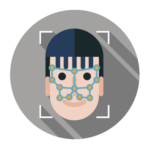Paravision will be looking to deploy its computer vision technology on more IoT devices after announcing that it now offers full support for Ambarella’s CVflow platform. CVflow is an AI processing architecture that is particularly well-suited to Edge computer vision applications thanks to its low computational footprint and minimal power requirements.

Paravision’s computer vision technology can support a number of different applications, including biometric payments and access control. The company’s facial recognition algorithm has achieved top scores in previous rounds of NIST testing, and Paravision will be able to preserve that speed and accuracy in an ultra-compact form factor with the help of the CVflow system-on-chip (SoC) portfolio, which includes the CV2, CV22, and CV25.
Digging into the numbers, the CVflow-powered algorithm will offer 30 FPS face detection and image quality assessment, as well as one-to-many identification in less than 100 ms. The solution will selectively compress certain videos and images to reduce bandwidth, and also gives customers the ability to obscure people’s faces at the camera level. Doing so helps ensure people’s privacy because it removes biometric identifiers from the video stream.
“Through this deep integration, we have the opportunity to enable new paradigms for user experience and industrial design, bandwidth efficiency, and biometric privacy,” said Paravision Chief Product Officer Joey Pritikin.
“The combination of Paravision software stack and Ambarella’s CVflow offers solution providers a truly compelling path to deliver face recognition and associated computer vision to a broad range of IoT applications,” added Ambarella Marketing and Business Development VP Chris Day. “This is a powerful pairing for partners looking for trusted, high-performance AI-powered computer vision at the edge.”
Paravision recently released an updated and more accurate version of its flagship facial recognition solution. The company has also shut down its Ever photo sharing service, citing increased competition from tech giants like Apple and Google.
–
December 1, 2020 – by Eric Weiss






Follow Us